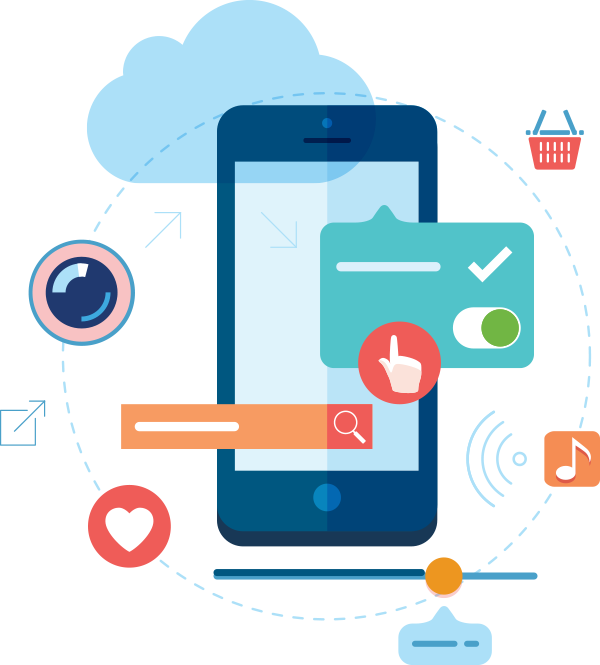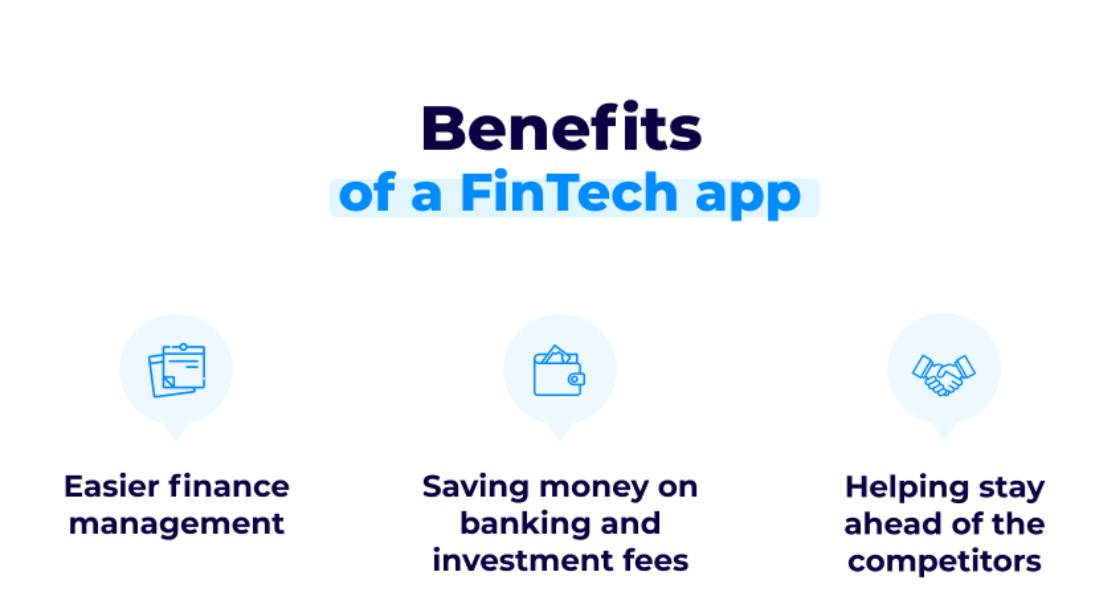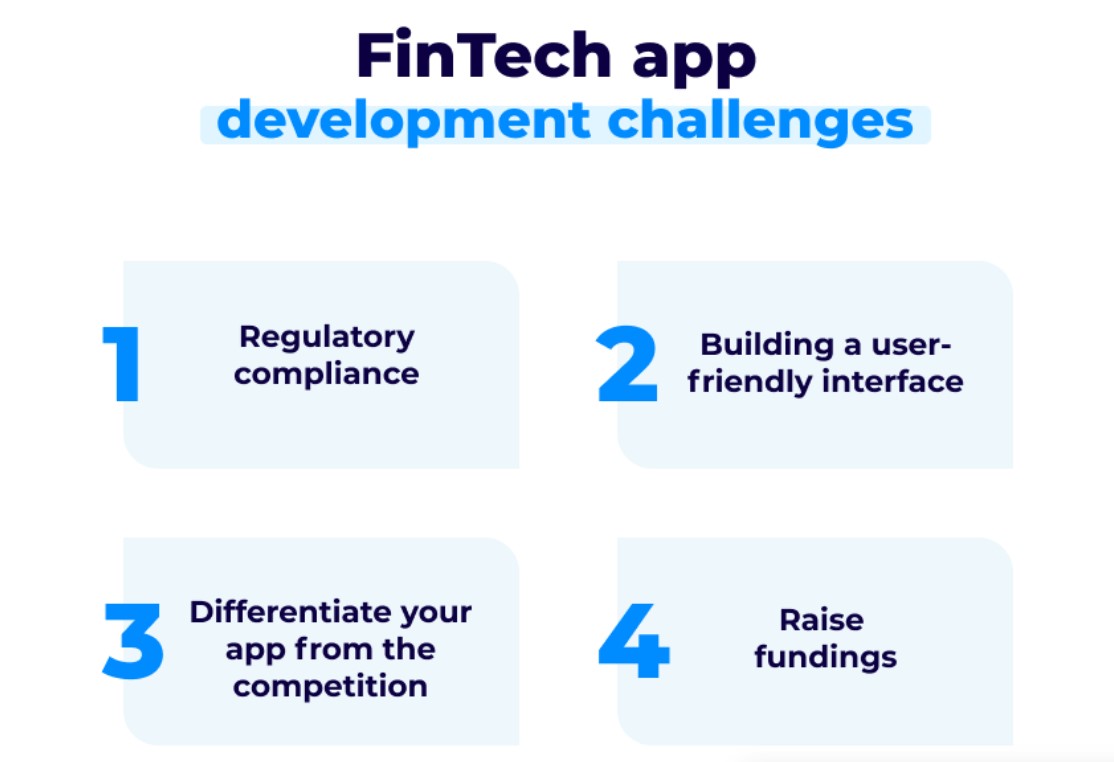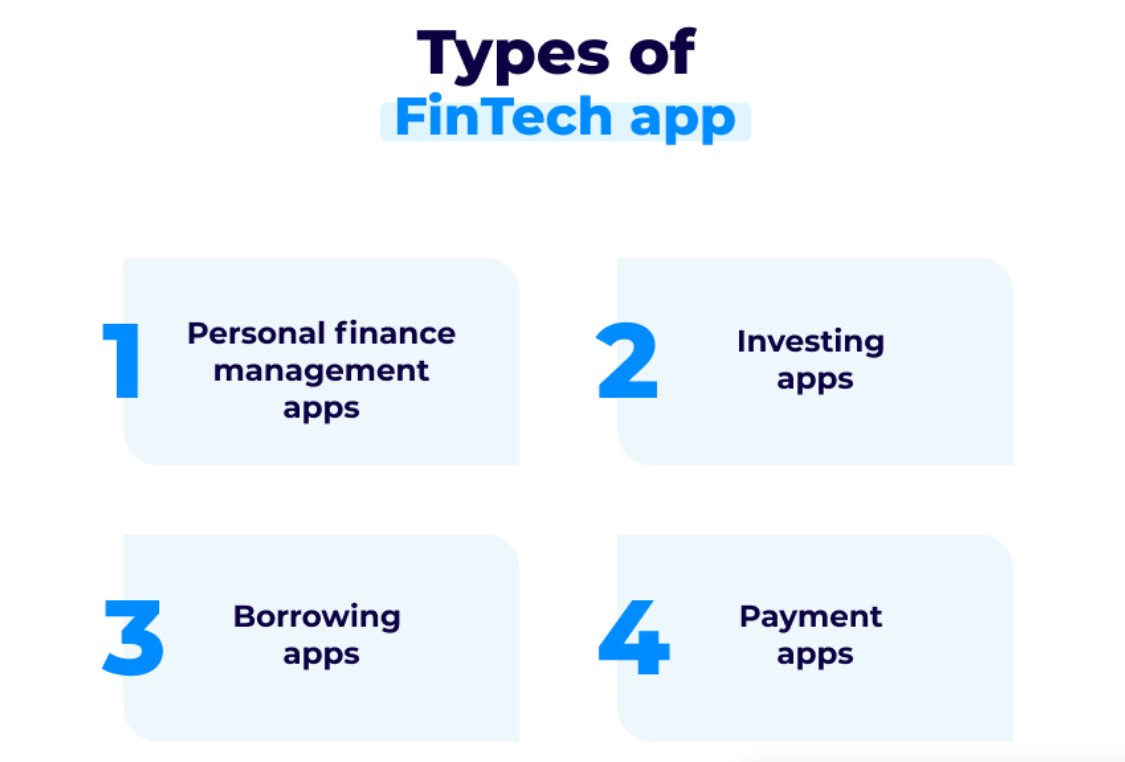
Fintech App Development:
A Complete Guide
FinTech, also known as financial technology, is one of the fastest-growing industries in the world. Therefore, it should come as no surprise that an increasing number of firms are searching for a FinTech development company to help them enter the market.
Your FinTech app can be improved with the newest technology if your goal is to expand your company. Functional elements like a spending tracker, credit score analyzer, or e-wallet for personal budget management can make consumers' lives easier. Users who adore your application and who help you stand out from the competition could generate interest in your business and boost your revenues.
But what does it take to build a successful FinTech app? This comprehensive guide will walk you through everything you need to know!
What advantages do FinTech applications offer?
FinTech applications have many advantages for your business and its customers. By implementing new and cutting-edge technologies, your company may generate more revenue and provide your clients possibly more convenient online payment and money management options. The list of the top benefits of FinTech apps is provided below.
1. Facilitating your clients' financial management
Your clients' ability to manage their finances can be significantly improved by a FinTech app. This is due to the fact that a FinTech software would often have an intuitive user interface. A FinTech app will frequently also have tools that let users browse FinTech categories as well as manage their spending and budgeting objectives. As a result, your clients' personal money management app will enable them to maintain control over their funds.
2. They can assist save money on banking and investing expenses
Additionally, a FinTech software can assist in reducing investment and banking fees. This is due to the fact that a FinTech app would often offer low-cost or even fee-free transactions for services like account transfers, money deposits from other banks, credit history, digital payments, etc. And your consumers will adore the convenience of having everything in a single finance app.
3. FinTech apps assist FinTech businesses in staying one step ahead of their rivals.
The ability of a FinTech app to keep FinTech businesses one step ahead of their rivals is one of the largest advantages of all. This is due to the fact that a FinTech app that is well-designed and user-friendly might provide it an advantage over other financial institutions. Therefore, using a FinTech app is the best method to stay current in the world of money. You may dominate the FinTech market if you offer your customers a mobile banking app that supports rapid money transfers, numerous digital banking solutions, cash advances, or debit card management.
4. FinTech apps frequently have better usability than conventional banking websites.
A FinTech app's propensity to be simpler and easier to use than conventional banking websites is another advantage. In many instances, this may be attributed to the layout's or design's simplicity: for instance, rather than having numerous sites with options like "deposit funds," "transfer funds," etc., your clients may just need to go through a few screens to accomplish their goals. For your customers, creating such a personal finance management app for digital payments might be like winning the lottery.
5. A FinTech app can increase client loyalty and retention
Finally, improving customer loyalty and retention is another advantage of a FinTech app. This is due to the improved online banking services that a personal finance app may provide. Additionally, as we all know, satisfied consumers are more likely to remain loyal to your business and to spread the word about you to new, potential app users.


What are the challenges involved in developing a FinTech app, and how can they be overcome?
There are a few key challenges that you’ll face when developing a FinTech app.
The first challenge is regulatory compliance. Financial technology companies are regulated by a variety of government agencies, and it can be difficult to navigate the complex web of regulations.
Another challenge is building a user-friendly interface. Payment apps can be complex so it’s important to make your FinTech app easy for users to follow.
Third, you’ll need to find ways to differentiate your app from the competition. There are many FinTech startups out there, so you’ll need to find a way to stand out from the crowd.
Finally, you’ll need to raise capital to get your startup off the ground. It can be difficult for new companies to secure funding from investors or banks, so you’ll need a solid plan for raising money for mobile technologies or additional features within your digital FinTech solution.

What is the price of developing a FinTech app?
A financial technology app typically costs $100,000 to $200,000. The budget and size of your project will have a big impact on this number.
The price of creating an app relies on a number of variables, such as:
– The size and complexity of the software (for example, whether it has many features or screens you plan to expand) (for example, if it has many features or screens you plan to add).
- The platform you are aiming to design for (desktop, iOS vs Android, or cross-platform)
- The amount of experience your team has with developing mobile apps and online banking systems
iOS, Android, or cross-platform FinTech app? What is the most time and cost-effective?
The choice between cross-platform and native technologies is complex, but also crucial to the success of your FinTech mobile application. Each of the solutions has its advantages, but also some limitations. We have described the factors that you should consider when you want to build a FinTech mobile app in a separate article.
If you have to develop your app fast, reach for Flutter, a technology thanks to which you’ll make a single application that will work on multiple devices. Its development process is shorter, so you can go to market as soon as possible. What’s more, you appear in multiple channels right away and get as many users as possible from day one.
On the other hand, industries like FinTech are strongly competitive and to succeed you have to fine-tune your product. Native technologies such as iOS and Android bring to your FinTech application outstanding performance, exceptional UX/UI design, and plenty of hardware features that can make your app even more interesting and useful for your users.
It all depends on what you desire the most, a short time to market, or the quality of the product in a long term.
How to design a FinTech app
App development is a difficult process and each time is a separate challenge. Unfortunately, there is no such thing as one correct instruction to do this. You have to consider many aspects, from technology to the most important features, development timeline, the size and composition of the team, work methodology, and choosing a FinTech app development company.
Anyway, we are here to help you, so below we listed the most crucial points that you should have in mind from the very beginning.
Validate the idea
Before actual development starts, you have to validate the idea from a business perspective, considering the user’s needs and competition in the market. Thanks to Product Workshops and Business Analysis, we’ll help you decide which functionalities are needed in your product from the very beginning and which of them could be left out or added later. By getting to know your competitors better, you will learn what functionalities work well in other FinTech apps, and on this basis, you will further refine your product.
Moreover, ask yourself questions like: “What kind of problem are you trying to solve?” or “Who is the target audience for this solution?” to ensure that you conducted the proper business analysis. Once you’ve determined these things, it’s time to move on to design and development.
However, if you still hesitate, hire an experienced FinTech application development company to conduct the Product Workshops for you.
Pick the appropriate platform for your FinTech mobile application.
Choosing the platform to build your app for is the next step. Users of iOS (27% of the market) and Android (72%) make up the majority of the market.
Both operating systems have their pros and cons but typically fall into two categories:
- iOS apps are more expensive to develop and maintain, but they’re also easier for users because of their simplicity.
- Android apps offer greater flexibility at much lower costs.
Therefore, you should choose the one that best meets your demands. Yet, if you want to be certain that your product reaches all of your prospective clients, you should either invest in two native versions of the application or consider a cross-platform solution. Thanks to this technology, a single app can function on several operating systems.
The two major cross-platform frameworks include Flutter and React Native. The former is particularly accessible because it is perceived as straightforward and simple to operate, but the latter has its fans as well.
Additionally, you can choose a highly functional Progressive Web Application (PWA), which is less labor- and resource-intensive to design and maintain but performs well on mobile devices.
Whatever option you select, make sure it is suited to your business' requirements and available resources.
Draw the UX/UI design
You should sketch up your app's User Interface (UI) when you develop mobile apps for the FinTech industry. From a business perspective, design is crucial since it is what customers see first. Customers will be more likely to stay in the app, spend more time using it, and return to it in the future if it proves to be appealing and intuitive.
Creating designs supported by proper business analysis and Product Workshops will allow you to eliminate wrong assumptions right from the start, decrease the number of mistakes during development, and reduce costs.
Since you have total freedom over how your FinTech app looks, take advantage of this opportunity and make it unique.
Create wireframes and mockups for each screen in the app
Following product design good practices, you should now proceed to transform the idea of your app into wireframes. These are basically just digital versions of those rough sketches that show how everything fits together with each other. They’re also a great way to visualize how users will navigate through different parts of the FinTech app.
Once these blueprints of your application are prepared and approved, hi-fi mockups should be designed on their basis. They constitute a complete representation of your app that imitates real UI interactions.
Develop your app’s backend
The last step of the development process is to develop the backend for your app. This includes all the code that makes the app work behind the scenes, as well as APIs needed for external integration, and it’s typically handled by a separate team of developers. For example, if you want your app to integrate various bank accounts, you need to work on this feature from the very beginning.
Decide on the layout for your app
It’s important to make sure that the design is both functional and visually appealing. Furthermore, the layout of your app should be intuitive and easy to navigate for the users, as it can enhance their experience with the app and improve the overall reception of your product.
Test, test, and test again!
Before you launch your FinTech app, test it extensively. This will help ensure that there are no glitches or errors that need to be fixed. The last thing you want is for your users to experience problems with your potential, blockbuster app.
Once the development process is complete, it’s important to test your app on different devices. This will help you catch any bugs or errors with financial transactions or add credit cards before you release your FinTech app to the public.
Create a prototype and test it with users
The best way to test your app is to create a prototype and test it with users. This will help you get feedback on how the app works and whether or not it meets their needs, as well as give feedback on any further digital banking apps you may want to develop.
Update your FinTech app based on user feedback and keep improving it over time
Once your FinTech app is released, it’s important to keep track of user feedback and update the app accordingly. This will help ensure that your app remains a top-quality product that meets the needs of your users.
What are the example features of FinTech apps?
Fintech apps are designed to make it easier to manage money. They can help your clients track spending, plan budgets for the future, use digital banking services, and invest their money wisely. Some of the features that you might find in FinTech software include:
- Tracking your spending over time so you can see where your money is going.
- Setting up budgets and goals to help you stay on top of your finances.
- Investing advice and tools to help you grow your money safely.
- Options for paying bills and transferring money between accounts quickly and easily.
- Features for tracking your credit score and getting alerts when something changes.
- Functions that allow your clients to access their accounts from anywhere in the world for a better user experience.
What is the best FinTech app?
The first and most crucial quality to look for in a FinTech app is that it’s easy to use. You want an app that has simple navigation, clear instructions on how you can accomplish tasks, and a sleek design so your customers don’t get frustrated using it. Here are some other things to consider when looking for the best FinTech app:
- Does the app have all the features you need?
- Is it easy to use?
- How does customer support work?
- What are users saying about it online?
The future of Fintech app market
The future of the FinTech app market looks bright. With more and more people moving away from traditional banking, there is a lot of room for growth in the FinTech space. In particular, there is a lot of interest in mobile apps that make it easy to manage finances on the go.
We’re likely to see even more innovation in FinTech software development in the future, as companies compete to provide the best possible user experience. Exciting times ahead!


